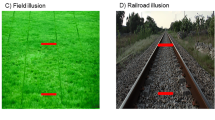Abstract
Navigation and monitoring of large and crowded virtual environments is a challenging task and requires intuitive camera control techniques to assist users. In this paper, we present a novel automatic camera control technique providing a scene analysis framework based on information theory. The developed framework contains a probabilistic model of the scene to build entropy and expectancy maps. These maps are utilized to find interest points which represent either characteristic behaviors of the crowd or novel events occurring in the scene. After an interest point is chosen, the camera is updated accordingly to display this point. We tested our model in a crowd simulation environment and it performed successfully. Our method can be integrated into existent camera control modules in computer games, crowd simulations and movie pre-visualization applications.
Similar content being viewed by others
References
Christie, M., Olivier, P.: Camera control in computer graphics. In: Eurographics 2006 State of The Art Report (2006)
Blinn, J.: Where am I? What am I looking at? IEEE Comput. Graph. Appl. 8(4), 76–81 (1988)
Gleicher, M., Witkin, A.: Through-the-lens camera control. In: Computer Graphics (Proc. SIGGRAPH ’92), vol. 26 (1992). Proc. Siggraph ’92
He, L.W., Cohen, M.F., Salesin, D.H.: The virtual cinematographer: a paradigm for automatic real-time camera control and directing. In: SIGGRAPH ’96: Proceedings of the 23rd Annual Conference on Computer Graphics and Interactive Techniques, pp. 217–224. ACM, New York (1996)
Kamada, T., Kawai, S.: A simple method for computing general position in displaying three-dimensional objects. Comput. Vis. Graph. Image Process. 41(1), 43–56 (1988)
Arbel, T., Ferrie, F.P.: Viewpoint selection by navigation through entropy maps. Comput. Vis. IEEE Int. Conf. 1, 248 (1999)
Lee, C.H., Varshney, A., Jacobs, D.W.: Mesh saliency. In: SIGGRAPH ’05: ACM SIGGRAPH 2005 Papers, pp. 659–666. ACM, New York (2005)
Vázquez, P.P., Feixas, M., Sbert, M., Heidrich, W.: Viewpoint selection using viewpoint entropy. In: VMV ’01: Proceedings of the Vision Modeling and Visualization Conference 2001, pp. 273–280. Aka, Germany (2001)
Ji, G., Shen, H.W.: Dynamic view selection for time-varying volumes. IEEE Trans. Vis. Comput. Graph. 12(5), 1109–1116 (2006)
Kwon, J.-Y., Lee, I.-K.: Determination of camera parameters for character motions using motion area. Vis. Comput. 24(7–9), 475–483 (2008)
Stoev, S.L., Straßer, W.: A case study on automatic camera placement and motion for visualizing historical data. In: VIS ’02: Proceedings of the Conference on Visualization ’02, IEEE Computer Society, Washington (2002)
Shannon, C.E.: A mathematical theory of communication. Bell Syst. Tech. J. 27, 623–656 (1948)
Kullback, S.: Information Theory and Statistics. Dover Books on Mathematics. Dover, New York (1997)
Cover, T.M., Thomas, J.A.: Elements of Information Theory. Wiley, New York (1991)
Schmid, C., Mohr, R., Bauckhage, C.: Evaluation of interest point detectors. Int. J. Comput. Vis. 37(2), 151–172 (2000)
Wolfe, J.: Visual search. In: Pashler, H.E. (ed.) Attention, Chap. 1, pp. 13–69. University College London Press, London (1998)
Itti, L., Koch, C., Niebur, E.: A model of saliency-based visual attention for rapid scene analysis. IEEE Trans. Pattern Anal. Mach. Intell. 20(11), 1254–1259 (1998)
Singh, S., Markou, M.: An approach to novelty detection applied to the classification of image regions. IEEE Trans. Knowl. Data Eng. 16(4), 396–407 (2004)
Itti, L., Baldi, P.: A principled approach to detecting surprising events in video. In: CVPR ’05: Proceedings of the 2005 IEEE Computer Society Conference on Computer Vision and Pattern Recognition (CVPR’05), vol. 1, pp. 631–637. IEEE Computer Society, Washington (2005)
Shoemake, K.: Animating rotation with quaternion curves. SIGGRAPH Comput. Graph. 19(3), 245–254 (1985)
Reynolds, C.: Opensteer, steering behaviors for autonomous characters (2004). http://opensteer.sourceforge.net/. Last Visited: 2008-11-01
Author information
Authors and Affiliations
Corresponding author
Additional information
This research is partially supported by Sabanci University Internal Grant IACF06-00423 and Istanbul Metropolitan Municipality Research Grant.
Rights and permissions
About this article
Cite this article
Turkay, C., Koc, E. & Balcisoy, S. An information theoretic approach to camera control for crowded scenes. Vis Comput 25, 451–459 (2009). https://doi.org/10.1007/s00371-009-0337-1
Published:
Issue Date:
DOI: https://doi.org/10.1007/s00371-009-0337-1




